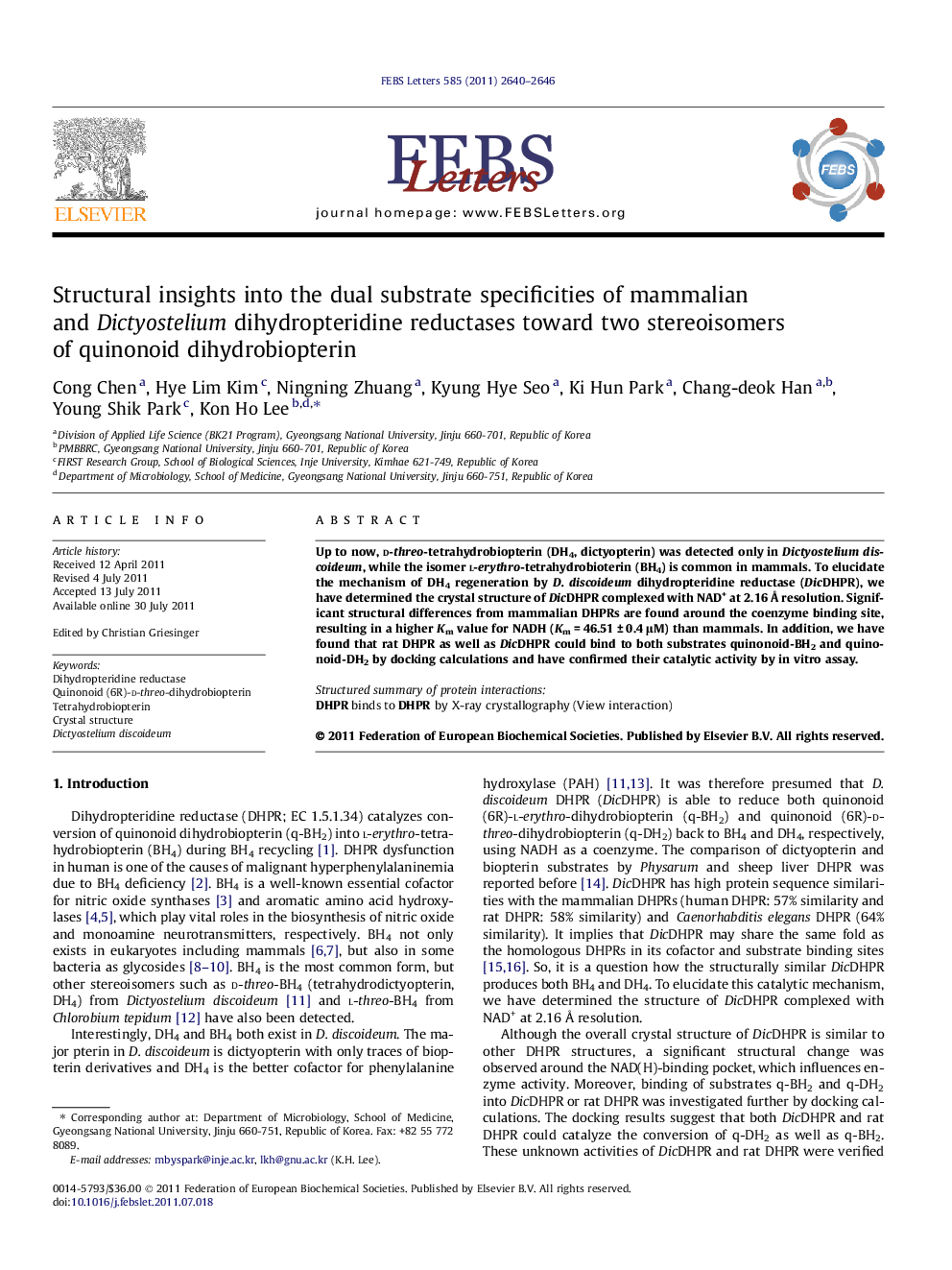| Article ID | Journal | Published Year | Pages | File Type |
|---|---|---|---|---|
| 2047939 | FEBS Letters | 2011 | 7 Pages |
Up to now, d-threo-tetrahydrobiopterin (DH4, dictyopterin) was detected only in Dictyostelium discoideum, while the isomer l-erythro-tetrahydrobioterin (BH4) is common in mammals. To elucidate the mechanism of DH4 regeneration by D. discoideum dihydropteridine reductase (DicDHPR), we have determined the crystal structure of DicDHPR complexed with NAD+ at 2.16 Å resolution. Significant structural differences from mammalian DHPRs are found around the coenzyme binding site, resulting in a higher Km value for NADH (Km = 46.51 ± 0.4 μM) than mammals. In addition, we have found that rat DHPR as well as DicDHPR could bind to both substrates quinonoid-BH2 and quinonoid-DH2 by docking calculations and have confirmed their catalytic activity by in vitro assay.Structured summary of protein interactionsDHPR binds to DHPR by X-ray crystallography (View interaction)
► The binary structure of DicDHPR-NAD+ has been solved in 2.16 Å resolution. ► Structural changes in NADH binding site result in a higher Km for NADH than mammals. ► A mammalian DHPR carries a dual substrate activity verified by in vitro assay. ► We built structural models of the ratDHPR and DicDHPR in complex with two substrates.
